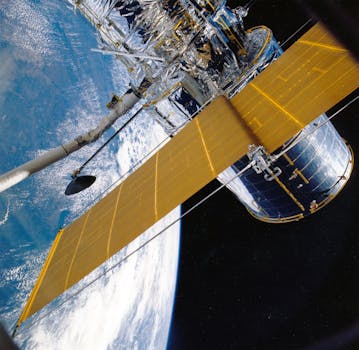Connecting the Globe: The Impact of Orbital Technology on Global Communication

Connecting the Globe: The Impact of Orbital Technology on Global Communication
Orbital technology has revolutionized the way we communicate, enabling instant connectivity across the globe. With the advent of satellite networks, the world has become a smaller place, and global communication has become faster, more reliable, and more accessible. In this article, we will explore the impact of orbital technology on global communication, its benefits, and future prospects.
Orbital technology, also known as satellite technology, uses artificial satellites in orbit around the Earth to transmit and receive data, voice, and video signals. This technology has been used for decades, but recent advancements have made it more efficient, cost-effective, and widely available. Today, satellite networks provide a range of services, including telecommunications, navigation, weather forecasting, and remote sensing.
The Benefits of Orbital Technology
Orbital technology has numerous benefits, including global coverage, reliability, and cost-effectiveness. Satellite networks can provide coverage to remote and underserved areas, where traditional communication infrastructure is lacking. This has enabled people in these areas to access essential services, such as healthcare, education, and financial services. Additionally, satellite networks are less prone to outages and disruptions, making them a reliable option for critical communication services.
Orbital technology has also enabled the development of new services and applications, such as satellite broadband, satellite phone, and satellite navigation. These services have transformed the way we live, work, and communicate, enabling us to stay connected, access information, and navigate our surroundings with ease. Furthermore, satellite technology has played a crucial role in disaster response and recovery, providing critical communication services during emergencies and natural disasters.
Applications of Orbital Technology
Orbital technology has a wide range of applications, including telecommunications, navigation, weather forecasting, and remote sensing. In telecommunications, satellite networks provide voice, data, and video services, enabling people to communicate with each other across the globe. In navigation, satellite systems, such as GPS, provide location information and timing signals, enabling us to navigate our surroundings with precision.
In weather forecasting, satellite imagery and data are used to predict weather patterns, storms, and natural disasters. This information is critical for emergency response, agriculture, and transportation. In remote sensing, satellite imagery is used to monitor the environment, track changes in land use, and detect natural resources. This information is essential for environmental monitoring, conservation, and resource management.
Future Prospects of Orbital Technology
The future of orbital technology looks promising, with advancements in technology, increasing demand for satellite services, and growing investment in the satellite industry. Next-generation satellite systems, such as low-Earth orbit (LEO) and medium-Earth orbit (MEO) satellites, are being developed to provide faster, more reliable, and more cost-effective services. These systems will enable the development of new applications, such as satellite-based 5G networks, satellite-based IoT services, and satellite-based earth observation services.
In conclusion, orbital technology has revolutionized global communication, enabling instant connectivity across the globe. Its benefits, including global coverage, reliability, and cost-effectiveness, have made it an essential component of modern communication systems. As technology advances, we can expect to see new applications, services, and innovations emerge, further transforming the way we communicate, live, and work.